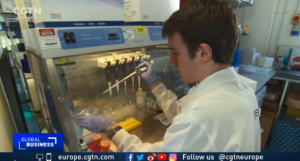New York City’s top public health official resigned Tuesday, accusing Mayor Bill de Blasio (D) of sidelining medical experts in the midst of a pandemic that has hit America’s largest city especially hard. In an emailed resignation letter, Health Commissioner Oxiris Barbot said she quit with “deep disappointment that during the most critical public health crisis in our lifetime, that the Health Department’s incomparable disease control expertise was not used to the degree it could have been.” “Our experts are world renowned for their epidemiology, surveillance and response work. The city would be well served by having them at the strategic center of the response not in the background,” Barbot wrote in an email first reported by The New York Times.
In an email to staffers, Barbot praised the agency as the gold standard in public health. “As I shared with the Mayor, your world class skills are what make this agency so respected around the globe,” Barbot told her colleagues. “Your experience and guidance have been the beacon leading this city through this historic pandemic and that to successfully brace against the inevitable second wave, your talents must be better leveraged alongside that of our sister agencies.”
Barbot has repeatedly clashed with de Blasio since the beginning of the pandemic. In May, the mayor stripped the health department of its authority over a massive contact tracing program, teams the department had led in past crises.
Nearly a quarter-million New York City residents have tested positive for the coronavirus, which began spreading widely through the city in March. At its peak in early April, more than 6,000 people were testing positive every day. Almost 19,000 have died, a steeper toll than any single state in the nation. The number of new cases has plummeted in recent weeks. On July 31, the last day for which data is available, just 82 New Yorkers tested positive. De Blasio on Tuesday appointed Dave Chokshi, a population health and medicine expert at NYU’s School of Medicine, to replace Barbot. Chokshi has been aiding the city’s response to the coronavirus outbreak.
“Dr. Chokshi has spent his career fighting for those too often left behind,” de Blasio said in a statement after Barbot’s resignation. “Never has that been more true than during the Covid-19 pandemic, where he has helped lead our City’s public health system under unprecedented challenges. I know he’s ready to lead the charge forward in our fight for a fairer and healthier city for all.”
Chokshi served as a White House fellow during the Obama administration and as a top health adviser to the secretary of Veterans Affairs.
New York City’s Department of Health and Mental Hygiene is one of the most prominent and practiced health departments in the world. Two former commissioners, David Sencer and Tom Frieden, went on to run the Centers for Disease Control and Prevention.



